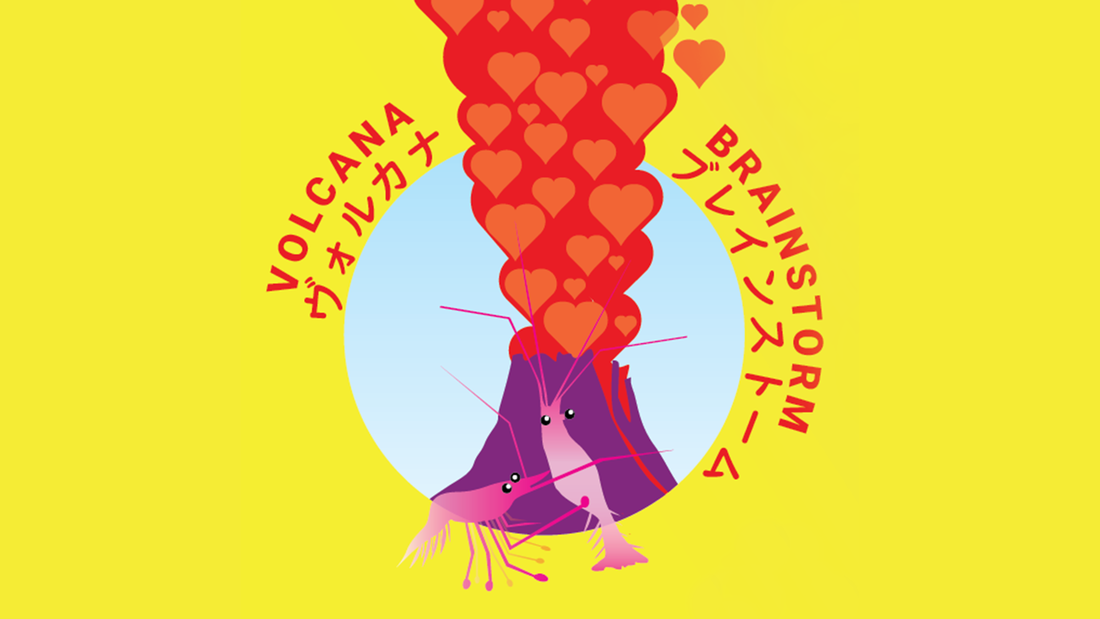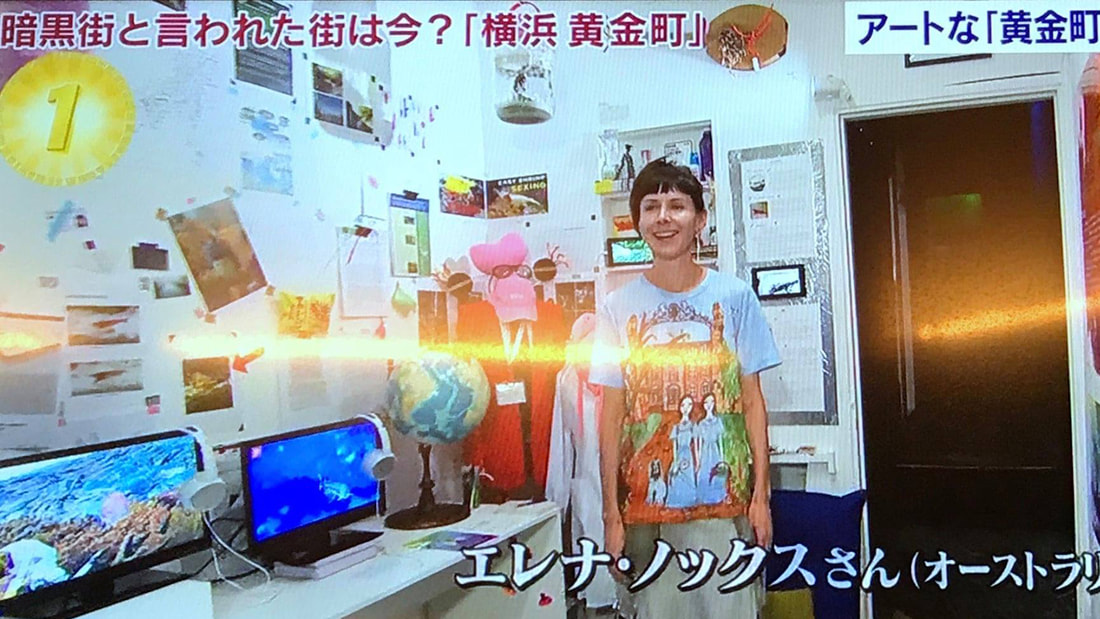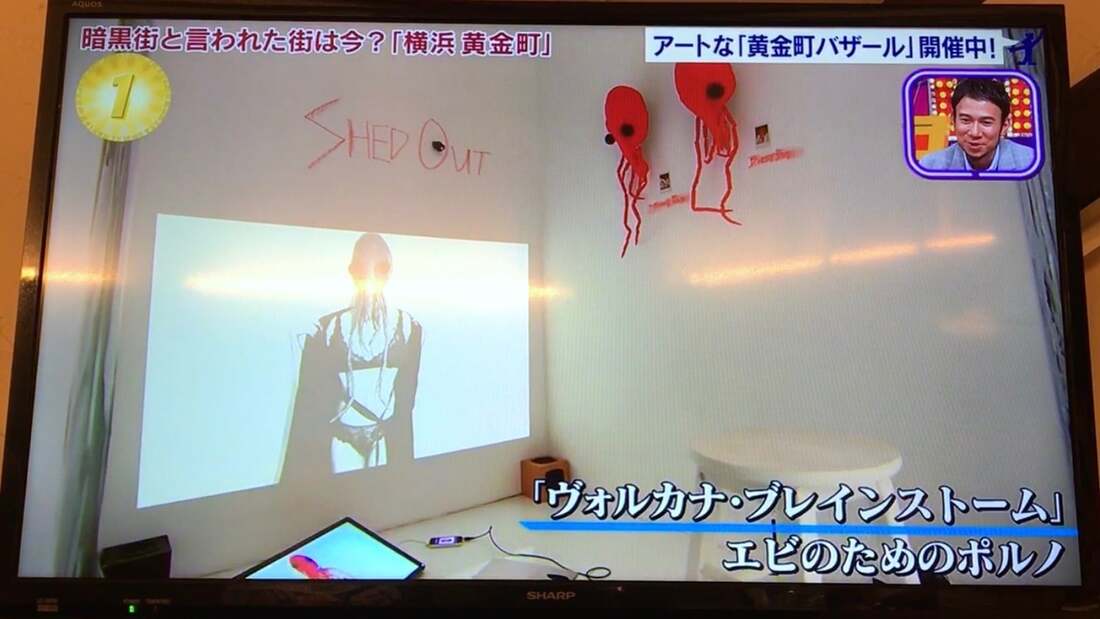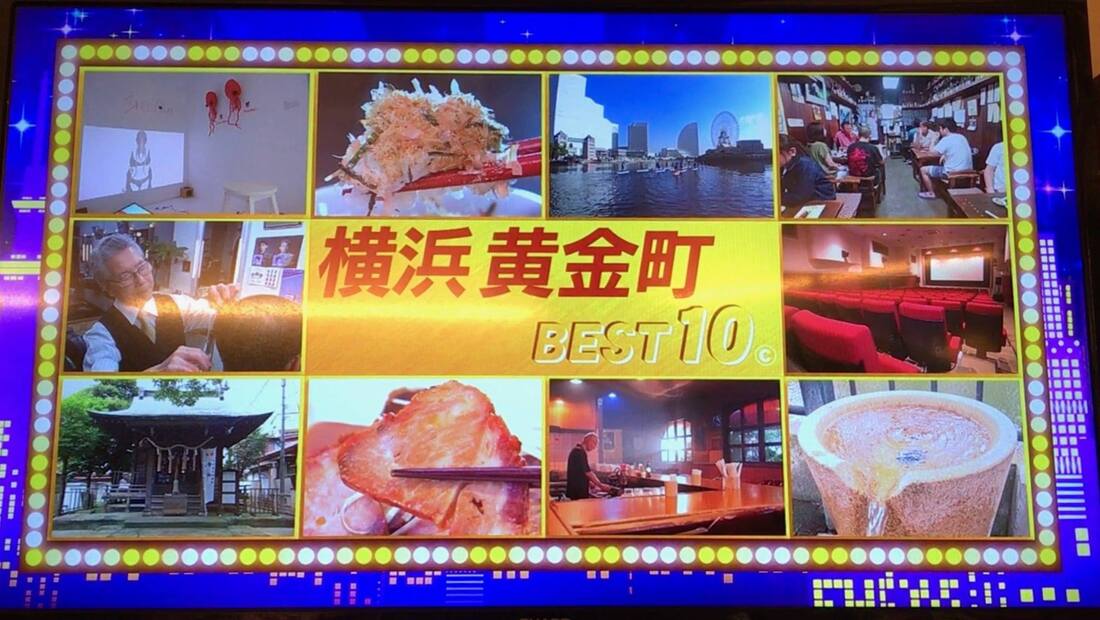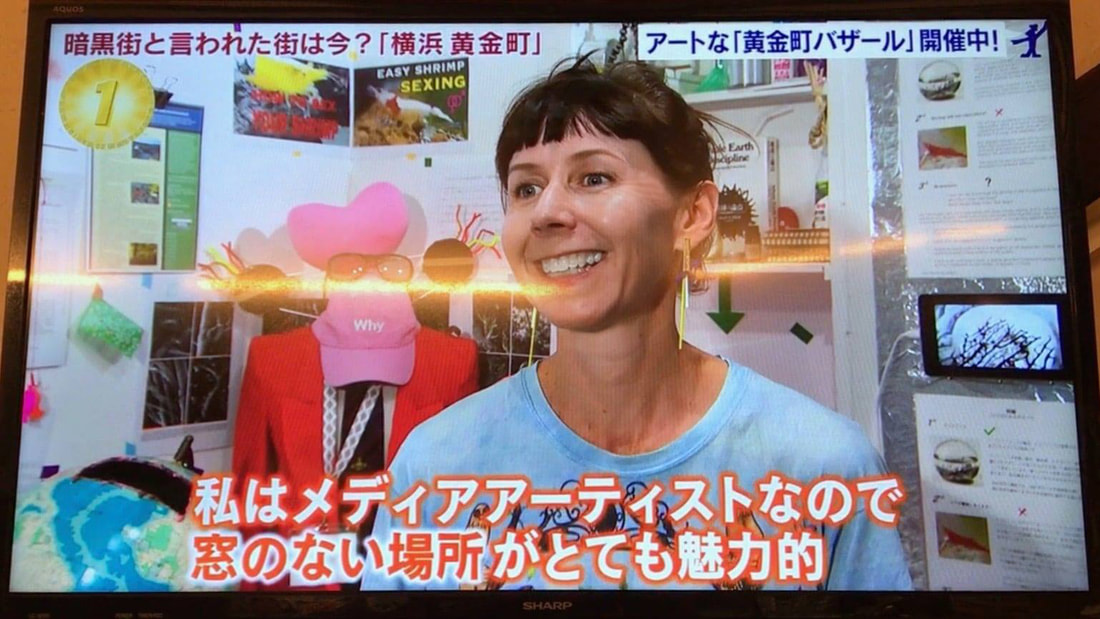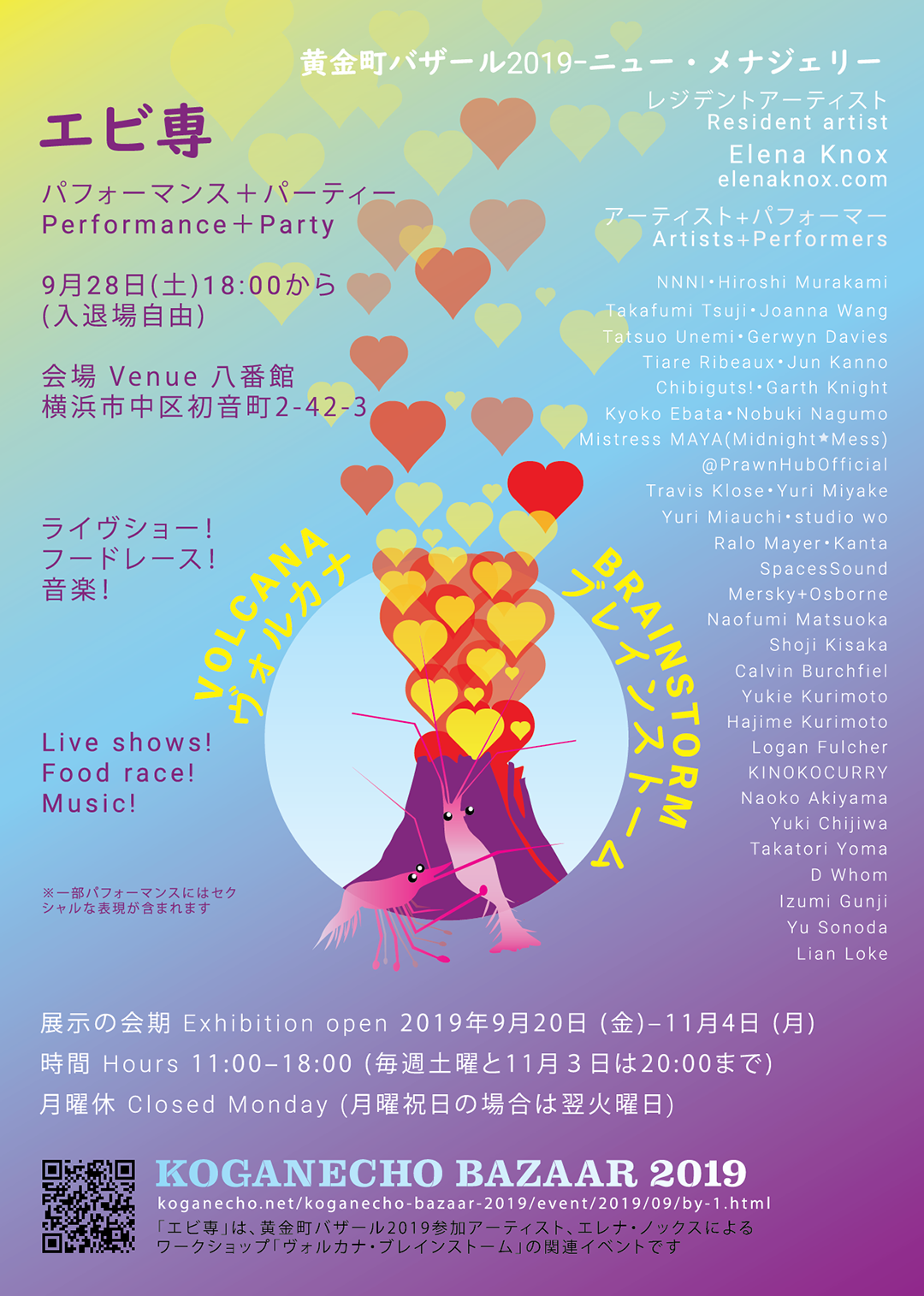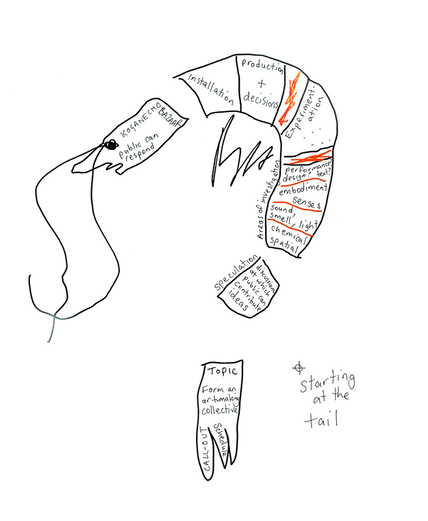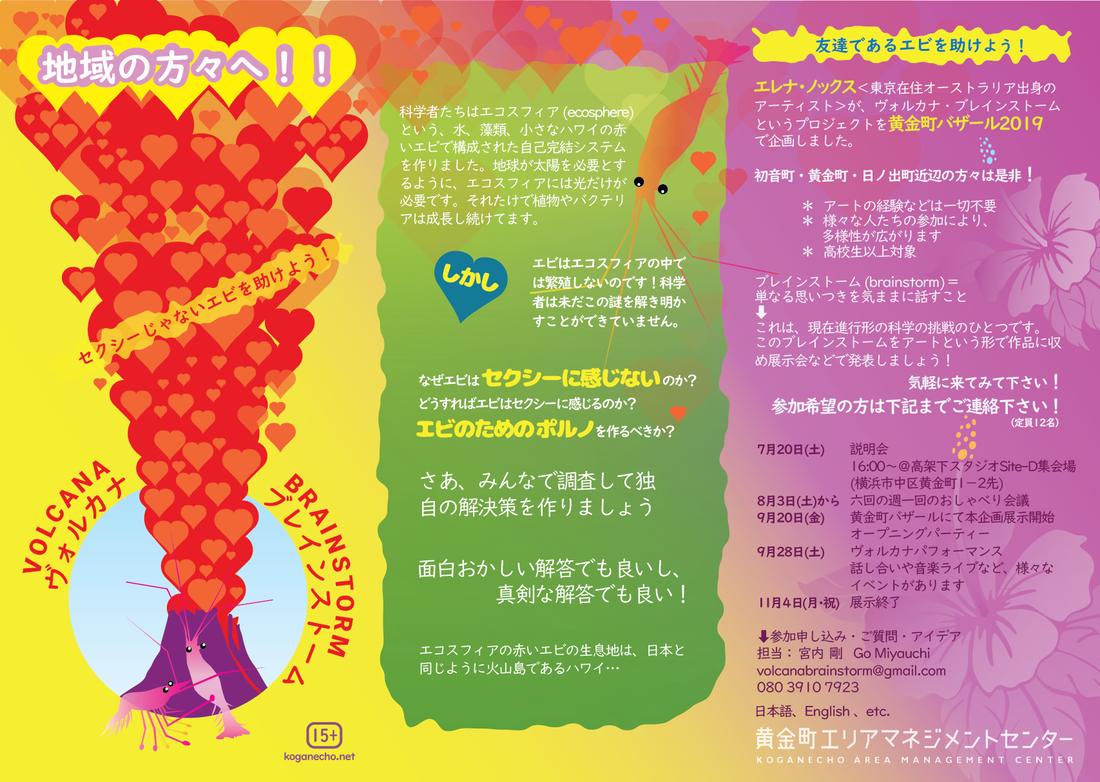Volcana Brainstorm
2019, 2020, 2022, participatory installation and performance
"Twisted and idiosyncratic expressions of shrimp life, and life in general!
All the expressions were meticulously good, and so this 'shrimp festival', so to speak, was a highlight of the Yokohama Triennale.
I hugely enjoyed it, because, you know, we’re living in a difficult time and we all need this merriment, this child-like whimsical merriment..."
Ken Mogi Brain World #kenmogionart
"A playground for adult unlearning...
In the installation Volcana Brainstorm ... by creating 'pornography for prawns,' the artist points towards possible ecological futures predicated on empathy between humans and animals."
e-flux, Criticism Koichiro Osaka
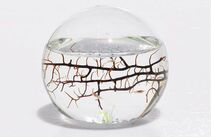
Volcana Brainstorm ・ ヴォルカナ ブレインストーム
or, How to Make Shrimp Feel Sexy 2019: For the Koganecho Bazaar festival's theme New Menagerie, this project involves the local community in creatively solving a current challenge of science. Our approach is speculative, poetic and humorous, but it is based in scientific research, and might even have implications for the future of life on Earth and beyond! Volcana Brainstorm creates a diverse “think-tank” dedicated to brainstorming an intriguing challenge over six weeks. It climaxes in a collaborative show in a former-brothel-turned-gallery, presenting all the solutions we worked up during the Koganecho residency. We are producing an exhibition/laboratory involving various forms of displays and events. The installation spans performance, video/audio, text, music, bio- and mechanical art, internet art, object design — because we approach our puzzle from many angles, using art-based lateral thinking to assist where science has gotten stuck. Volcana Brainstorm’s unique and fascinating challenge takes into account the history of Koganecho as a red-light district, but its focus is playfully positioned in the (marine) animal world. the problem (‘pornography’ for shrimp?) The Ecosphere: A blend of art and science, ecospheres are small glass spheres containing closed ecological systems. They are filled with sea water, active micro-organisms, small shrimp, algae and bacteria. All these things rely on each other — and only on each other — for food and sanitation. Their little worlds are completely self-sustaining, simply needing light (natural or artificial) to stay alive and nourished. Ecospheres were invented in the 1960s, and since the 1980s scientists have used them to study how animal and plant life could help sustain humans in space exploration. 
Shrimp Will Not Reproduce!
The shrimp in ecospheres is the Hawaiian red shrimp Halocaridina rubra. It is native to small volcanic pools containing both fresh water and salt water. It is chosen because it is tough and adaptable, and it lives for a long time. But, despite biologists’ best efforts, everything self-sustains within the ecosphere except the shrimp, which will not procreate and reproduce, even though everything else is in balance. So, animal life does not continue indefinitely. The reason for the shrimp’s continued refusal to mate in the ecosphere is currently unknown. * How Can We Encourage Shrimp in Ecospheres to Reproduce? * Why Don’t They Feel Sexy? * What Would Make Them Feel Sexy? Our “think-tank” sets out to empathize with these unsexy shrimp, and to conceptualize aids to rebalance the situation. While humorously one would think that this may take the form of some kind of pornography for shrimp (what would that be??), it should also address other important factors.
Remind me that the most fertile lands were built by the fires of volcanoes.
|
Editions
Festival of the Fantastic In Australian and Japanese Arts (ファンタジア・ダウンアンダー日豪幻想芸術の交流祭), Japan, November 19, 2022 (fantastic sketch edition) Yokohama Triennale 2020, Japan, July 3 – October 11 (hot lava version) Koganecho Bazaar 2019, Japan, September 20 – November 4 Participating Artists NNNI・Hiroshi Murakami・Yuri Miauchi・Joanna Wang・Tatsuo Unemi・Gerwyn Davies・Tiare Ribeaux・Jun Kanno・Chibiguts!・Garth Knight・Kyoko Ebata・@PrawnHubOfficial・Takafumi Tsuji・Mistress MAYA (Midnight★Mess)・Travis Klose・Yuri Miyake・studio wo・Ralo Mayer・SpacesSound・Mersky+Osborne・Naofumi Matsuoka・Shoji Kisaka・Calvin Burchfiel・Yukie Kurimoto・Hajime Kurimoto・Logan Fulcher・KINOKOCURRY・D Whom・Yuki Chijiwa・Yoma Takatori・Naoko Akiyama・Izumi Gunji・Kanta・Yu Sonoda・Lian Loke・Jin Tong・Osamu Kajitani・Tim Byrnes・Pooya Sareh・Prawn Waters Special Events 2019.07.16 Artist talk in BioClub Tokyo, 16 July 2019 2019.09.20 Opening | Koganecho Bazaar 2019.09.28 エビ専 Volcana Brainstorm performance event, 6pm 2019.10.14 Tiny's Yokohama: Eat the Heart of Shrimp food-art event Links Volcana Brainstorm in Koganecho Bazaar 2019 Artist interview on YouTube Information briefing at Koganecho Area Management Center Some videos of エビ専 <Volcana Brainstorm performance event> Volcana Brainstorm edition #1 catalog (Koganecho Bazaar 2019) thematics
Though the scale of the inspiration is physically small, its resonance is big. The project Volcana Brainstorm has to do with future worlding. It shows that our interactions with each other shape the success of the planet. If we were to solve the challenge of the ecosphere shrimp, we would literally create a new menagerie. They would be able to spawn future generations of Halocaridina rubra inside the sphere, materializing a science-fiction scenario by becoming a world-first contained, fabricated ecology. The red shrimp’s ability to spawn future generations would help inform human strategies for survival in different types of climate emergency. It also informs research into survival off-planet, making intergalactic connections more possible. Locally, the project also promotes conversations about Japan’s reducing population, the so-called “sexless Japan”. Why are the shrimp deciding not to procreate? Is there something we should change? Japan and Hawaii are both volcanic islands. Perhaps the solution to the shrimp’s physical arousal can be found here, in an old Japanese prostitution area in a land of volcanoes. Our big world is very like this little one, and we are very like the shrimp. But there is at least one major difference: Unlike the shrimp, we are able to change our environment.
|
